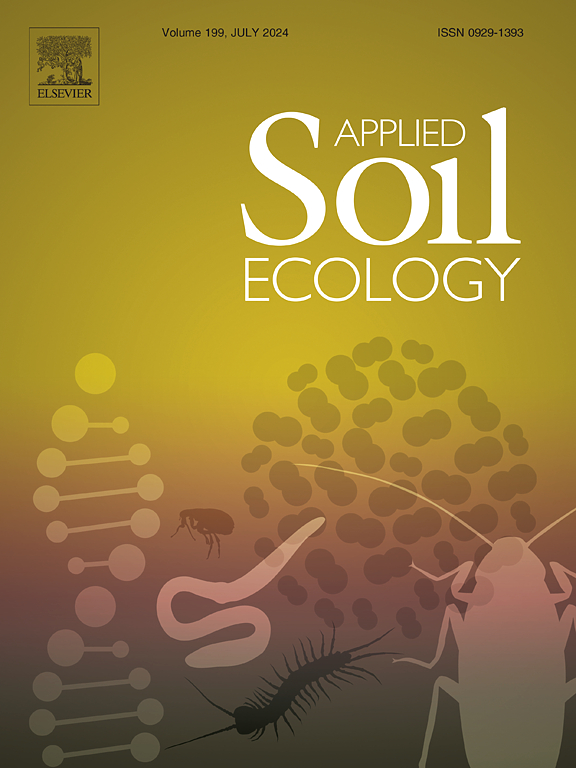Plant above-ground biomass drives the recovery of soil microbial communities in a subtropical-temperate transition zone following forest wildfire
IF 4.8
2区 农林科学
Q1 SOIL SCIENCE
引用次数: 0
Abstract
Wildfire profoundly reshapes soil microbial community structure and function, thereby modulating biogeochemical processes in natural ecosystems. However, the extent to which post-fire vegetation restoration influences these microbial communities in forest soils remains insufficiently characterized. To address this knowledge gap, a chronosequence approach spanning post-fire intervals of 1, 6, 13, and 29 years was employed to assess shifts in microbial composition, biomass, and community structure in subtropical-temperate ecotonal forests of Central China. The findings indicate temporal fluctuations in microbial biomass, including microbial biomass carbon, nitrogen, and PLFA contents, with significant declines observed exclusively in the first year post-burn. These variations were primarily regulated by above-ground biomass and dissolved organic carbon. Microbial community structure exhibited dynamic responses to fire, with an increased gram-positive to gram-negative bacterial ratio and a rise in the cyclopropyl to precursor (cyc/pre) ratio during the early post-fire period. However, the fungi-to-bacteria ratio remained stable across the 29-year chronosequence. The elevated cyc/pre ratio was largely attributable to reductions in above-ground biomass, which altered resource availability and microbial interactions. Notably, fungal communities exhibited more prolonged shifts than bacterial communities, suggesting lower resilience to wildfire disturbances. These results highlight above-ground biomass as a critical determinant in the post-fire recovery trajectory of soil microbial communities.
求助全文
约1分钟内获得全文
求助全文
来源期刊

Applied Soil Ecology
农林科学-土壤科学
CiteScore
9.70
自引率
4.20%
发文量
363
审稿时长
5.3 months
期刊介绍:
Applied Soil Ecology addresses the role of soil organisms and their interactions in relation to: sustainability and productivity, nutrient cycling and other soil processes, the maintenance of soil functions, the impact of human activities on soil ecosystems and bio(techno)logical control of soil-inhabiting pests, diseases and weeds.
 求助内容:
求助内容: 应助结果提醒方式:
应助结果提醒方式:


